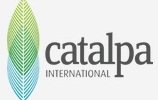Managing for Results in Timor-Leste with the IATI Standard
Catalpa International, an Australian not for profit software development and aid management company, is partnering with the Australian Government to use the IATI Standard as a framework for managing the work of the Australian Aid Program’s implementing partners in Timor-Leste. Supported by the Department of Foreign Affairs and Trade’s (DFAT) innovationxchange, the project will seek to support better monitoring and evaluation of nutrition programmes.
This is a really exciting and novel use of the IATI Standard to track aid program outcomes, and is welcomed by the IATI Secretariat as a positive step forward in the use of IATI data. We spoke to David Roach, Catalpa International Director and Co-Founder, about the project.
What are the plans for the project so far?
The plan is to provide a monitoring and evaluation system to better address the issue of malnutrition, by making it easier for programme implementers to report activities, expenditure and results directly to DFAT in an IATI compliant format. Catalpa will deploy our ‘Openly’ Open Data Information Management software as the backbone of this system. Openly is already being used in Myanmar to track donor aid flows with great success.
Malnutrition in Timor-Leste is a major concern, with 50 per cent of children under five years experiencing stunting – one of the highest rates globally. We’ve been based in Timor-Leste for close to eight years and have seen the impact malnutrition has on Timor’s overall development. When the opportunity came up to build on our existing partnership with DFAT, we jumped at the chance to help make a positive impact in the communities in which we work.
How do you hope to use the results information?
Firstly, we’re going to use the IATI Standard to coordinate the collection of activity results across partners. Partners from a number of sectors will be working under a shared monitoring and evaluation framework, reporting all their activity outcomes online. At Catalpa, we’ll be aggregating this results data across all of the partners and tracking their collective progress in as near real-time as possible.
The second part of the project will use mobile technology to gather information around impact, for such things as anaemia levels and under-nutrition, so that DFAT and its implementing partners will be able to see how activity outcomes are influencing nutrition rates.
We will be also exploring the use of biometrics to collect results over smart-phones, and other technology to simplify and improve the quality of data collected in a low resource settings.
Will the data be made publicly available?
Yes, this is one of the reasons why we are so excited about the project. Over time we will be working with DFAT to create a series of interactive, publicly accessible dashboards and other online tools, so partners and the general public will be able to track the same information as DFAT staff in Dili and Canberra.
What do you hope the benefits of this project will be to DFAT, its implementing partners, and citizens of Timor-Leste in general?
For DFAT, this is an opportunity to support greater coordination among their implementing partners and provide a stronger focus on assessing the effectiveness of aid programmes in a more efficient manner. At the same time, it allows DFAT to connect with implementing partners in a simpler way, as well as fulfilling their international obligations to increasing aid transparency.
For the implementing partners, this will hopefully streamline reporting requirements and allow them to devote resources to achieving results and better value for money for the donor. The idea is that when data is open and shareable across DFATs implementing partners, it can be aggregated together to promote better analysis, leading to more efficient and effective allocation of effort and resources.
And for the citizens of Timor-Leste, we think this will be one of, if not the first, aid activity that is monitored in real time in a public way. As access to the internet and mobile phones increases, not just in Dili but throughout rural areas, we think there will be a greater demand for this type of initiative.
For further information on Catalpa and their projects you can visit their website. For further information on IATI and the Standard, visit www.iatistandard.org.
